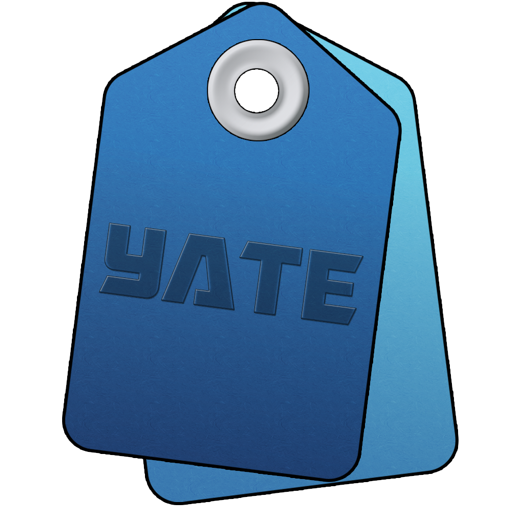

APE tags are free format where multiple values for the same named tag are permitted. While Yate supplies a default set of mappings you may change the mappings to whatever you wish. You can map APE tags to most of Yate's fields.
Note: You cannot make changes to the mappings when files are open.
You can assign more than one APE tag to the same field, but when the file is written only the first APE tag name will be used. When more than one name is associated with a field the first occurrence of the field will have its name prefixed with a -. You can find these items easily by selecting any table row and typing a -. If the name you want to be written is not the first, you can force it to be by selecting the item and clicking on the 1 button. Note that if the mapping is associated with a Custom Field, the Custom Field's mapping will be updated to reflect the new default.
Yate does not allow you to assign APE tags to any of its binary encoded fields.
Any APE tags that do not have an assigned field will be mapped to a UDTI or if the APE tag name contains URL, to a UDURL.
If an assigned field supports more than one item or value, multiple instances of a APE tag will be assigned as specified. If the assigned field only supports a single value, the first APE tag will be assigned and subsequent tags of the same name will be assigned to UDTIs or UDURLs. For example, if you have two Title tags in a file and Title is mapped to the Title field, the Title field will display the two tags in its advanced editor. If you have two COMMENT tags and COMMENT is assigned to the Comment field, the two tags will appear as separate items in the Comments advanced editor.
To create a new APE mapping click on the + button. Choose a field from the pop up menu and then edit the name.
To remove APE mappings, select one or more mappings in the table and click the - button. Note that mappings associated with Custom Fields will not be deleted. Removing a Custom Field's APE value in Settings-General-Custom Fields will remove the mapping. If you delete all displayed mappings, the mappings will be reset to their out of the box state with Custom Fields applied. In fact if you do not have at least one non Custom Field mapping, a reset will be triggered.
To rename an APE mapping, select a single mapping in the table and click on the ✎ button. Alternately double click in the desired item's name column.
To change the field associated with an item, select the item and click on the F button. Alternately, double click in the desired item's mapping column. Note that you cannot change the associated field on a mapping currently used by a Custom Field.
To export one or more APE mappings so that they can later be imported, select one or more mappings in the table and click the ⇒ button.
Some applications write a few of the Involved People roles to separate low level items and they are not associated with an Involved People mapping. In order to facilitate these items, Yate allows you to set mappings for Involved People List Items. These items describe a mapping of a field which is displayed in Involved People but gets read and written from alternate mappings. These Involved People List Items take the following form:
mapping name{=display name}
The display name is optional and is intended primarily for use with FLAC/OGG mappings. If not specified, the mapping name will be used to represent the role in the Involved People field. The following Involved People List Items are supplied by default:
Arranger
DJMixer=DJ Mixer
Engineer
Mixer
Producer
When specifying the roles in the Involved People fields the effective display name must be used. The name is case insensitive.
You can also elect to have Involved People List Items written twice, once to the designated mapping and once to the default Involved People mapping. More information on APE options can be found in Settings - Audio - APE.
APE tags are case sensitive. However, in order to complicate the issue, it is forbidden to use APE tags which only differ in case. So, for all intent and purpose, the names are essentially case insensitive. An attempt is made to be case preserving. When tags are written to the file, tag names which only differ by alphabetic case are coalesced. If you are using Yate fields or unassigned items that Yate directly processes (eg. Discogs Release Id), you do not have to worry about the alphabetic case. This is because the application normalizes the internal names of items it directly knows about.
You have another option. Names which are mapped to UDTIs are treated as normalization values and affect the display of the metadata being loaded. If you do not map My Metadata it will be implicitly be mapped to a UDTI but the desired display name may not be preserved. However, if you map a UDTI to My Mapping, Yate will handle the modification of all tag names with different alphabetic case representations when loading and writing the value.